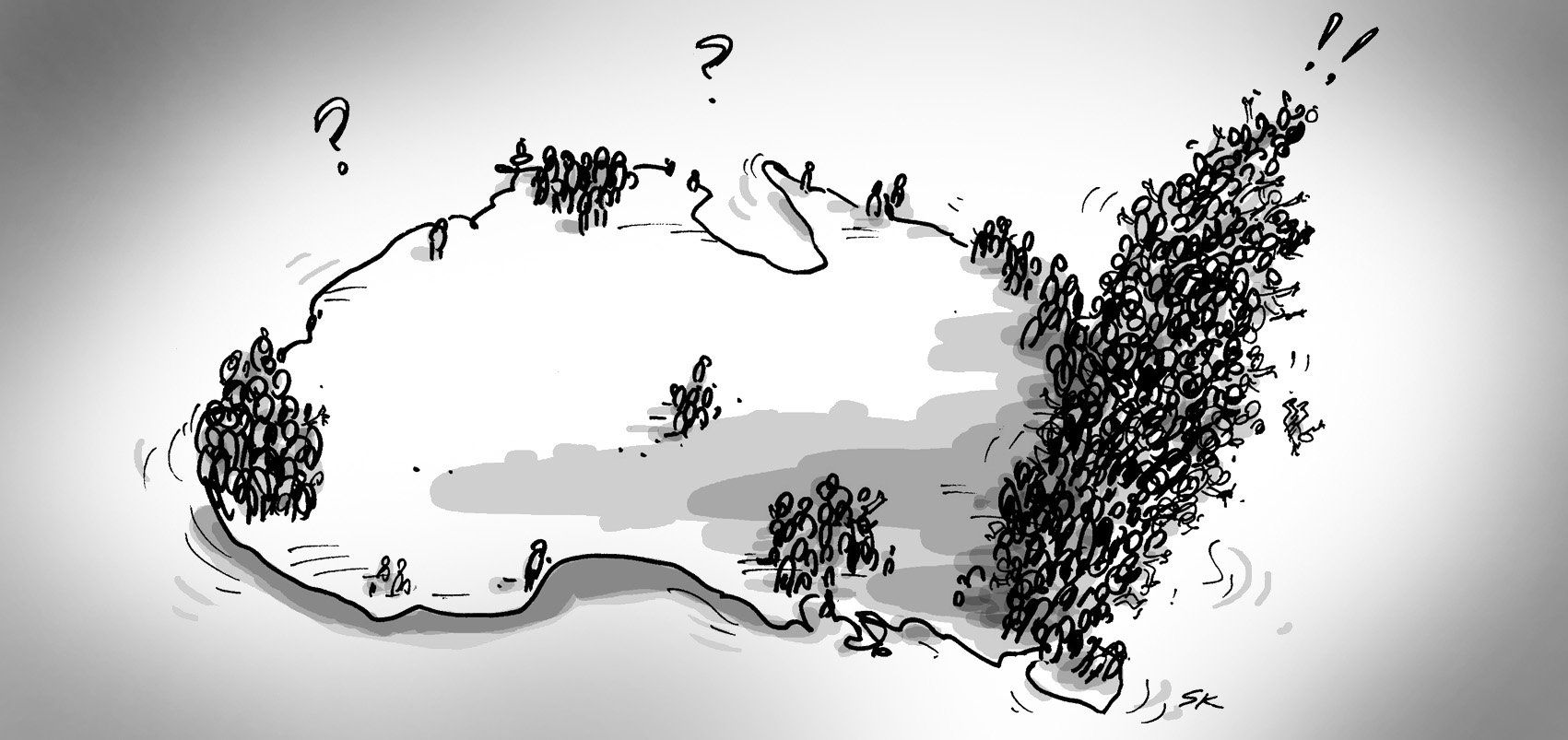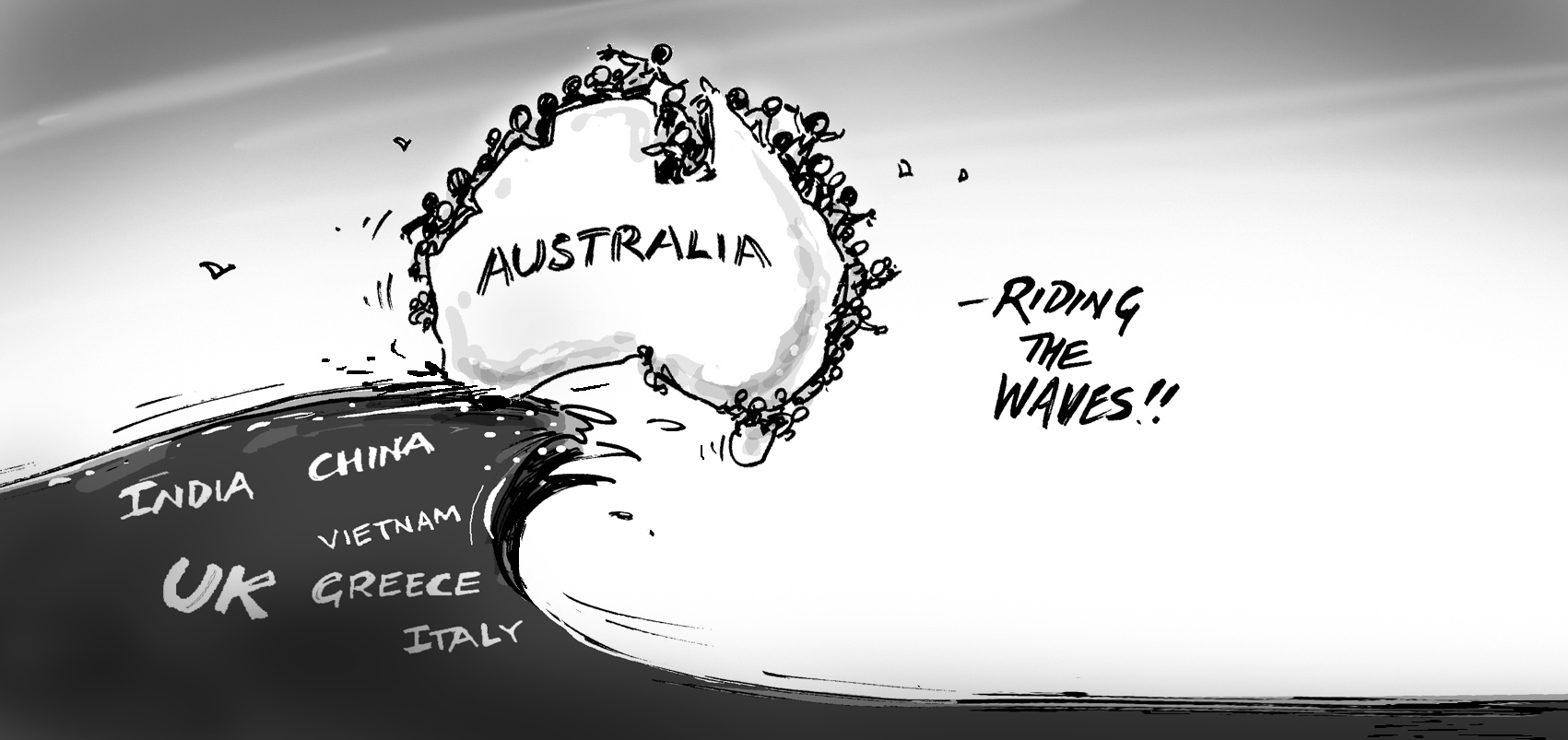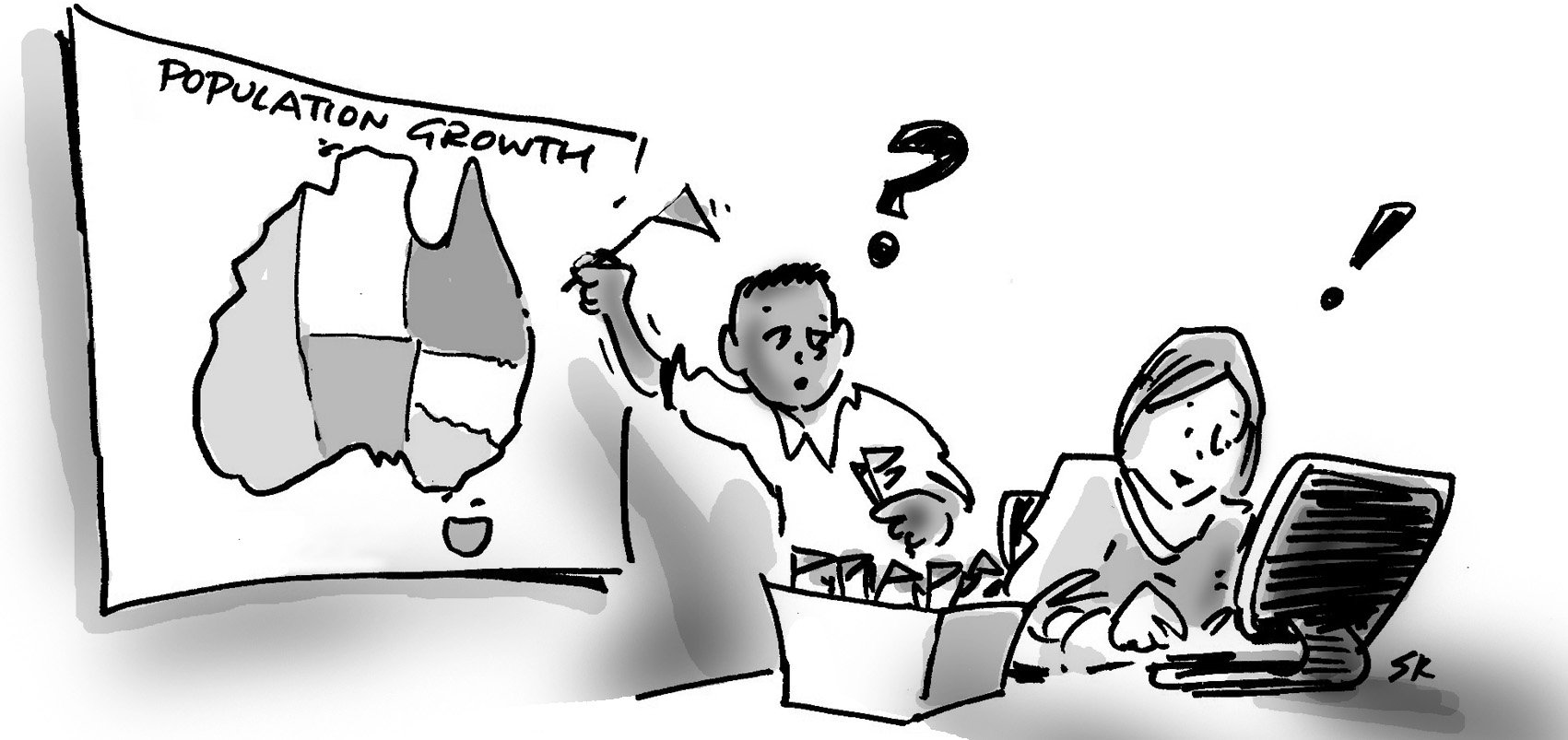BLOG
Queensland drives Australia's population growth while Victoria declines
Queensland drives Australia's population growth while Victoria declines
Part of our ongoing monitoring of new population data, this blog sees Glenn unpack the December 2020 quarter release, focusing on how natural increase, overseas migration and interstate migration combine to tell different stories of population growth for Australia’s states and territories.
Australia’s population has managed a very small increase in the quarter ending December 2020, sitting at 25,694,393 people. New figures released by the ABS in the quarterly update of the Australian Demographic Statistics publication show a quarterly increase of 6,900 people between September and December 2020. The calendar-year figures now contain 9 months which are affected by COVID-19, particularly Australia’s international border closures which means no significant overseas migration. For the calendar year in total, the growth was 136,300 people, or 0.5%.
Very low growth Australia-wide
This is the lowest national growth in a calendar year since 1916 – in the middle of World War I. In that year, the population fell by 1.0%. Nationally, our population may well record a fall once the March 2020 quarter drops off the annual change. This change in that quarter (largely pre-COVID) made up 82% of the annual population growth in the calendar year.
Australia’s population has for many years been driven predominantly by a high rate of overseas migration. With borders closed, there is very little overseas migration now, and in fact the net overseas migration (NOM) has been negative for the past 3 quarters. In the December quarter 2020, 24,900 more people left Australia permanently or long-term than came to settle here. Negative overseas migration is almost offsetting our rate of natural increase (more births than deaths), which varies only a little, and is approximately 30,000 people per quarter. The 0.5% growth rate is really only what could be expected for the year from natural increase, in the absence of migration – but given that migration is now negative, it’s likely that the next quarter’s figures will show an annual growth rate far below natural increase, and possibly even negative.
State trends tell the story
Growth is not distributed evenly between the states and territories where differing overseas and interstate migration patterns come into play. Here is the summary for the year and the last quarter.
| December quarter 2019 to December quarter 2020 | September quarter to December quarter 2020 | ||||||
|---|---|---|---|---|---|---|---|
| State/Territory | Population December 2020 | Annual change | Annual change % | Quarterly net change | Quarterly net natural increase | Quarterly net overseas migration | Quarterly net interstate migration |
| New South Wales | 8,172,505 | +35,608 | 0.44% | +8,009 | +10,982 | +2,295 | -5,268 |
| Victoria | 6,661,736 | +745 | 0.01% | -16,635 | +7,804 | -17,903 | -6,536 |
| Queensland | 5,194,879 | +58,114 | 1.13% | +11,056 | +6,202 | -4,909 | +9,763 |
| South Australia | 1,770,790 | +9,401 | 0.53% | +299 | +1,316 | -1,151 | +134 |
| Western Australia | 2,670,241 | +24,537 | 0.93% | +3,255 | +3,941 | -1,891 | +1,205 |
| Tasmania | 541,506 | +3,237 | 0.60% | +491 | +252 | -60 | +299 |
| Northern Territory | 246,561 | +1,344 | 0.55% | -51 | +555 | -310 | -296 |
| ACT | 431,484 | +3,241 | 0.76% | +504 | +811 | -1,006 | +699 |
| Australia | 25,694,393 | +136,261 | 0.53% | +6,931 | +31,865 | -24,934 | 0 |
Victoria becomes the slowest growing state
- Just a year ago, Victoria was the fastest growing state, and it had been for the previous 6 years. In one year it’s become the slowest growing state, with virtually zero growth for the calendar year of 2020, and a decline of 31,000 people over the last 3 quarters of the year (16,600 in one quarter). This shows the effect of being the hardest hit state with COVID-19 and the resultant extended lockdowns that Victoria has endured. It has by far the largest overseas migration loss, as well as the largest movement of population to other states, with few coming in. If this trend continues (two more outbreaks resulting in lockdowns in the first 6 months of 2021 suggest it will), Victoria will record a population decline of about 1.0% for the current financial year.
Queensland accounts for much of Australia’s growth
- Queensland was the only state to grow by over 1% in the last year. Its growth is still down from previous years, but it added over 58,000 people for the calendar year. Queensland accounts for 43% of the nation’s growth over the last year; for the December quarter, the state’s quarterly net growth was 159% of the nation’s net growth. Yes, Queensland grew by more than the whole country – take out Queensland and there is a significant population decline nationwide.
South Australia & Tasmania hold steady
- South Australia grew at exactly the same as the national growth rate – while growth has fallen a bit, it has turned around a negative interstate migration and continues to grow modestly.
- Tasmania also seems to be “business as usual” with a growth rate above the national average for the year.
Western Australia sees a return of internal migration
- Western Australia has the second-largest net interstate migration gain for the quarter, after several years of exodus, people are returning to WA – perhaps due to its very strong border measures and control of the pandemic, or it might have more to do with the return of the mining boom and high iron-ore prices.
New South Wales surprises with overseas migration
- New South Wales shows a quarterly increase in population of over 8,000 people after a decline in the September quarter. This is pretty low growth compared to recent years, but it’s driven by being the only state to record a positive overseas migration gain. More overseas arrivals came to NSW to settle than left for overseas. All the more strange because December quarter is not traditionally a high migration quarter for the state. March and September quarters – coinciding with the start of semester for international students – tend to have higher numbers. It may be something to do with NSW taking the highest proportion of quarantining returnees, or a small amount of business sponsored migration into Sydney. If anyone knows more about why this would be, feel free to comment!
Census will bring more insight
These changes to population growth are quite profound. From burgeoning growth and housing issues in Queensland to population losses in Victoria which have not been seen in living memory. The 2021 Census is going to shed more light on the characteristics underpinning this change. While we have some current numbers on our Locoal Government Community Profile sites (annual migration, JobSeeker), the Census is the flagship for small area detail. Not too long to wait, Census day is August 10th this year, and the ABS are likely to have some data out by around June 2022.
The population numbers and change shown here won’t be reflected in the .id sites just yet because we only get this info once a year at small area level (LGAs, suburbs etc.). The reference period for this is June, but national and state numbers come out each quarter, and can give an idea of what’s coming up and how these trends might play out at a local level. For instance we’re advising our clients in Victoria to expect declining populations in many areas for the next few years.
Need more assistance in understanding population issues in your area? We’re here to help. Drop us a line at demographics@id.com.au or just comment on this article. We’re also running demographic briefings, either in-person or online, to help our Local Government partners understand these changes due to COVID-19.
Glenn - The Census Expert
Glenn is our resident Census expert. After ten years working at the ABS, Glenn's deep knowledge of the Census has been a crucial input in the development of our community profiles. These tools help everyday people uncover the rich and important stories about our communities that are often hidden deep in the Census data. Glenn is also our most prolific blogger - if you're reading this, you've just finished reading one of his blogs. Take a quick look at the front page of our blog and you'll no doubt find more of Glenn's latest work. As a client manager, Glenn travels the country giving sought-after briefings to councils and communities (these are also great opportunities for Glenn to tend to his rankings in Geolocation games such as Munzee and Geocaching).









